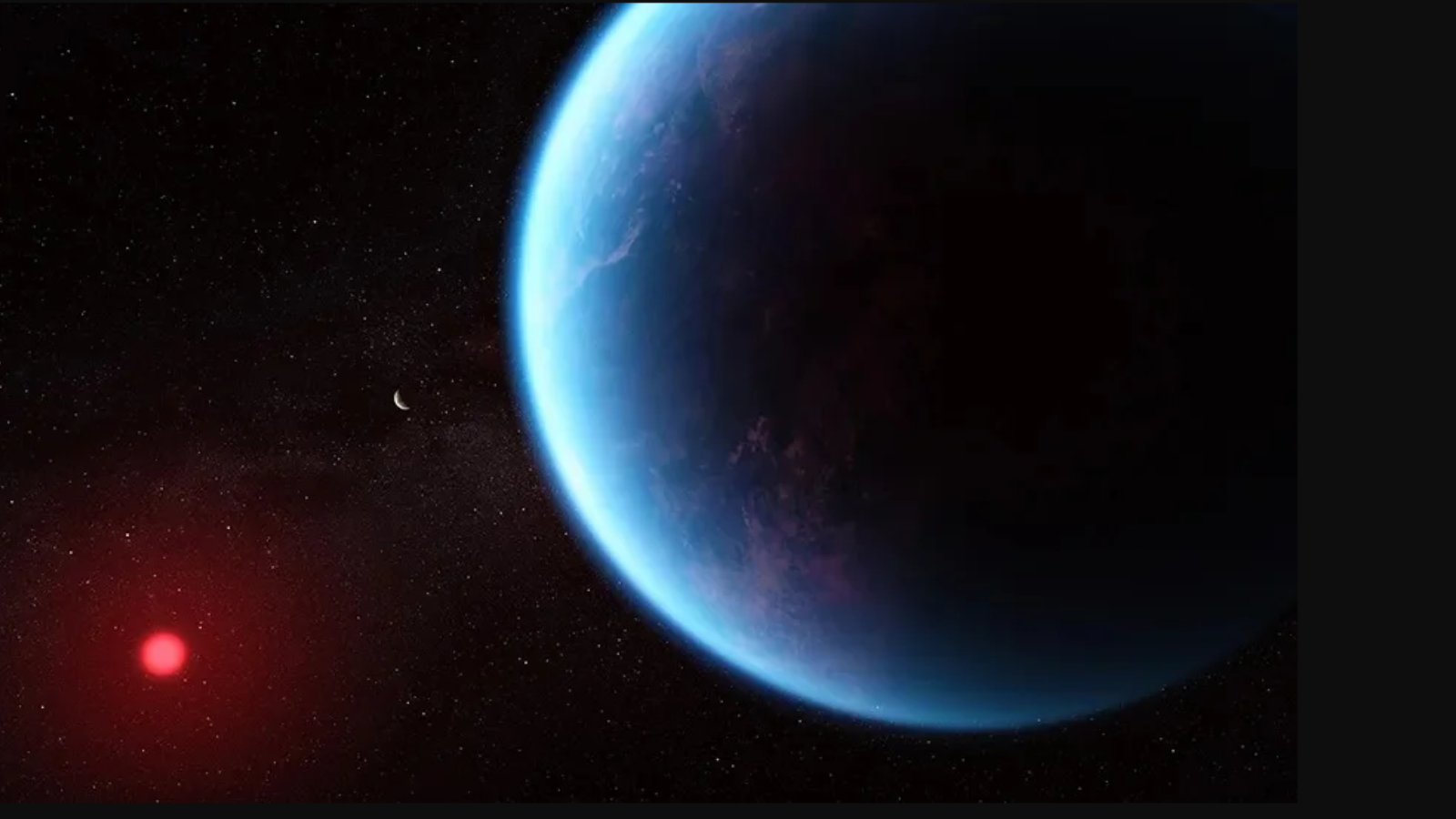Extraterrestrial Life Detected by the James Webb Space Telescope: New Analysis
Follow us on Google News (click on ☆)
Often compared to Earth due to its potential oceanic characteristics, this world had revealed traces of carbon dioxide and methane, with no ammonia, suggesting a hycean planet covered with oceans under a hydrogen-rich atmosphere.

An illustration of the super-Earth K2-18 b, the subject of excitement last year.
Credit: NASA/CSA/ESA/J. Olmsted (STScI)
However, one element particularly intrigued researchers: the potential presence of dimethyl sulfide (DMS), a compound produced by phytoplankton in Earth's oceans. If this detection were confirmed, it could indicate an active biological life producing DMS at a rate 20 times higher than that on Earth.
These results are from a study by the University of Cambridge using the James Webb Space Telescope (JWST). However, a second analysis, conducted by scientists at the University of California, Riverside (UCR), concluded that the data might not be conclusive.
According to Shang-Min Tsai, project leader at UCR, the DMS signal overlaps with that of methane, making it difficult to accurately detect by the current instruments of the James Webb telescope. The team is therefore considering using other instruments to continue observing K2-18 b.

An illustration of what K2-18 b might look like.
Credit: AI-generated image by Shang-Min Tsai/UCR
This twist in the search for signs of extraterrestrial life is not a setback, but rather emphasizes the importance of these preliminary investigations, paving the way for future discoveries on hycean worlds, some of the most promising for the search for life.
Eddie Schwieterman, an astrobiologist and team leader at UCR, highlighted that the most promising biosignatures on an exoplanet could be different from those on Earth, and that hydrogen-rich atmospheres might reveal unexpected compounds.